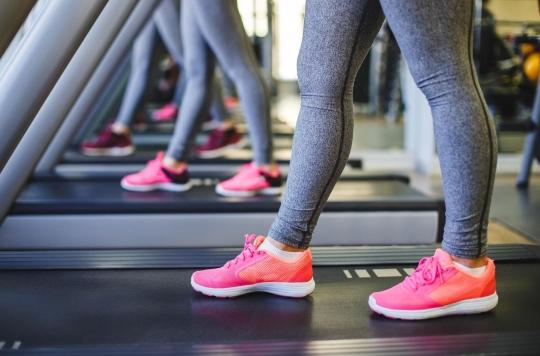Twenty minutes of brisk walking is better than drinking coffee to improve your working memory, according to a new study. Indeed, physical exercise would be just as effective, without the side effects associated with caffeine.

To wake up or boost their concentration when they start dozing at work, some do sports, others drink coffee. While numerous studies show the benefits of physical exercise for health and cognitive performance, coffee is on the other hand a very controversial beverage. While studies have shown that caffeine can be good for memory, many side effects such as migraines, nausea and tremors occur in people who abuse it. Also, according to a new study published in the journal Nature Scientific Reports, to improve your working memory, it is better to play sports, if only for twenty minutes, than to drink coffee.
For their study, researchers from Western University in Ontario (Canada) divided the participants into a group that drank coffee and another that played sports. They then tested their memory via repeated exercise before and after 20 minutes of brisk walking on a treadmill or the administration of caffeine.
Results: physical exercise and caffeine have a similar effect. Indeed, participants showed improvements in working memory whether they played sports for twenty minutes or drank coffee. Remember that working memory facilitates the learning process and makes it possible to store useful information such as a telephone number in the short term.
Sports activity reduces side effects related to caffeine withdrawal
If these results will at first sight satisfy coffee addicts who hate sports, remember that caffeine has many side effects. People who drink more than four cups a day can indeed suffer from stomach aches and headaches, muscle tremors, anxiety or an increased heart rate. Those who already suffer from anxiety or muscle tremors should limit their coffee consumption as much as possible, as should pregnant or breastfeeding women.
“Healthy people who drink two cups of coffee a day are generally fine in the sense that it’s not going to negatively affect most of your physiological functions. However, for some populations, caffeine consumption can be problematic and should be limited or reduced”, comments Anisa Morava, co-author of the study.
For those trying to quit, withdrawal is very unpleasant: nausea, fatigue, irritability and a “foggy brain” are common symptoms. In 2004, one study has shown that 50% of people who quit coffee suffered from headaches for several days afterwards. Caffeine withdrawal can therefore affect cognitive functions, which is quite ironic when you consider that many of us regularly drink coffee to make our neurons work better.
However, according to another phase of this new study, physical exercise did indeed help reduce the symptoms of caffeine withdrawal that began to appear in participants who were coffee drinkers who had not consumed coffee for 12 hours. . “If people are cravings, brisk walking can reduce some of the symptoms,” Morava explains. Also, if the researcher admits that reducing her coffee consumption is not easy, she recommends people who are trying to reduce to start exercising.
One energy drink equals four cups of coffee
In Europe, the European Commission has published a report estimating that a healthy adult should not exceed 400 milligrams of caffeine in the blood, or four cups of coffee per day. This also applies to tea, sodas and energy drinks which alone contain the equivalent of four cups of coffee. Beyond this threshold, the individual will tend to suffer from insomnia, which may lead him to drink even more coffee the next day in the hope of staying awake. In the long term, if a person’s daily dose exceeds 600 mg, they will be exposed to vasomotor risks (tachycardia, hot flushes), digestive disorders (heartburn), tremors and loss of energy. appetite.
As for physical activity, health authorities continue to recommend it. For adults, the government advises 30 minutes of physical activity “developing moderate to high intensity cardio-respiratory fitness, at least 5 days a week, avoiding going 2 consecutive days without practicing.”
“Physical activities with cardiorespiratory and muscular aims can be integrated into the same activity or during the same day”, it is specified on Ministry of Health website. To avoid a sedentary lifestyle as much as possible, it is recommended to limit your time in a sitting position and to interrupt these periods every hour or every hour and a half to walk for a few minutes.
.















